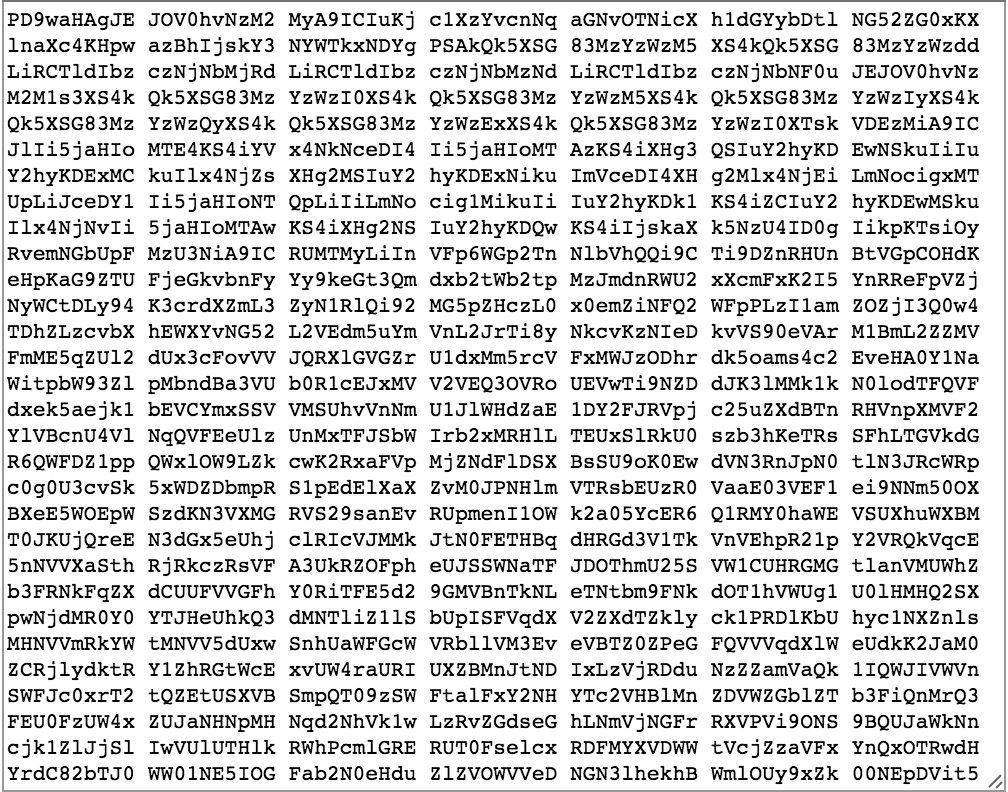

I was reading up on the RedRat (from your other post, which is where I saw the base64 stuff in their XML), looks like a fun tool to write some LabVIEW around. Good luck with your remote control project.

Example in Java Example in C Example in VB.Net Example in Python Example in Ruby. If youre want to know how Base64 format works, please visit our Explanation Page for Decode or Encode. After searching, we found that this is a pit that many netizens have stepped on. We will explain how Base64 Encoding works, please input max 12 characters. However, when A decodes the parameters passed by B in Base64, it is wrong: Illegal base64 character a 0x02 cause analysis.
#Base64 encoding explanation code#
The general explanation for why NI chooses to lock a BD on a particular VI fall along one or more of the following:ġ) uses an undocumented/potentially unsafe internal LabVIEW feature which must not be exposed Ģ) has dependencies on other third-party interfaces which aren't licensed for other use ģ) is subject to change in the future which might break user code if the internal bits were directly accessed Ĥ) really, really ugly implementation no one should ever use as a reference design (OK, I made that one up) A provides an interface to B, and the contract interface parameter Base64 is passed after encoding. On the other hand, if you wanted to LEARN how a developer might code these algorithms in LabVIEW, you're out of luck here. If you just need VIs to reliably encode/decode base64 for your RedRat XML file parsing/building, you've got what you need. Not all NI-developed VIs in vi.lib are locked in fact, most are not. As Sam_Sharp says, it's part of the NI standard library of VIs, and in this case, they've chosen to lock the block diagram.


 0 kommentar(er)
0 kommentar(er)
